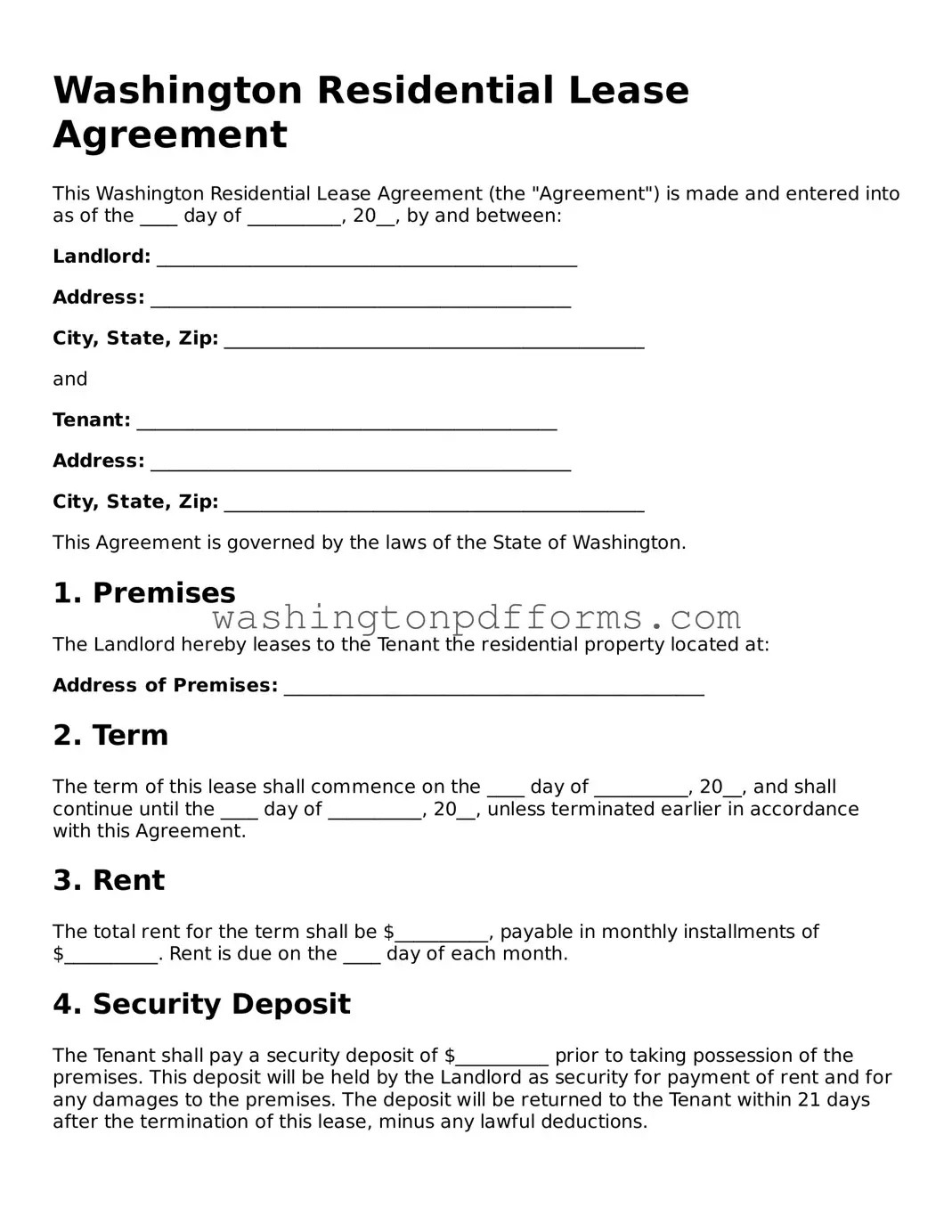Filling out the Washington Residential Lease Agreement form can be a straightforward process, but many individuals make common mistakes that can lead to complications later on. One frequent error is failing to provide accurate tenant information. It is essential to list the full names of all tenants who will occupy the property. Omitting a tenant's name can create issues regarding responsibilities and rights under the lease.
Another common mistake is neglecting to specify the lease term clearly. Whether it is a month-to-month agreement or a fixed-term lease, clarity is crucial. A vague lease term can lead to misunderstandings and disputes regarding the duration of the tenancy.
Many people also overlook the importance of detailing the rent payment terms. This includes the amount of rent, the due date, and acceptable payment methods. Incomplete information can lead to confusion about when and how payments should be made, potentially resulting in late fees or eviction proceedings.
Additionally, some individuals fail to address security deposits adequately. The lease should clearly state the amount of the deposit, the conditions for its return, and any deductions that may be taken. Not including this information can lead to disputes when the tenancy ends.
Another mistake involves not including maintenance responsibilities. Both landlords and tenants have obligations regarding property upkeep. If these responsibilities are not clearly defined in the lease, it can lead to disagreements about who is responsible for repairs and maintenance.
Lastly, many overlook the importance of including specific terms regarding pets. If a landlord has a no-pet policy, it must be stated explicitly in the lease. Conversely, if pets are allowed, the lease should outline any restrictions or additional fees. Failing to clarify these terms can lead to conflicts and potential breaches of the lease.
